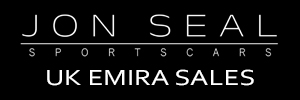I just finished watching A New Dawn again. Hadn't seen it since it first came out. With all that's happened since then, I really appreciate the effort that's gone into getting these cars to be what they are, and into production. There's a good section on the rear subframe with the V6 on it, and there's a lot to it. I can see why they didn't bother redesigning a new one. Wasn't really necessary for their goals and purpose for this car.I could be wrong, but wasn't there some coverage of why Lotus had to go with a steel rear subframe for Project Eagle (Evora) in the New Dawn video?
Perhaps there have been some (minor) changes, but I have assumed to date that the Emira and Evora rear V6 subframes are identical. If these galvanized steel subframes rust, I would have expected this issue to have impacted V6 Exiges and Evoras over the past decade as well.
A carbon fiber rear hatch with thin, light-weight glass would be a good spot to save weight, and a good location to save it. That would help lower the COG of the car. That would be more cost-effective than a new subframe.
In days past I might be more enthusiastic about reducing weight, but right now, as I watched that video and look at the car, I'm not so gung ho to do much to it. More than anything, I want to just drive it. After the first 1,000 miles I expect I'll have a better idea what I think might need improving, if anything.


















